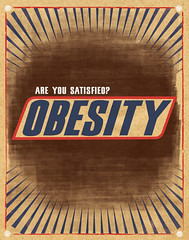Objective To examine the association between screen time (ST) (ie, television/DVD/video and computer use) guidelines and risk factors for cardiovascular disease, type 2 diabetes mellitus, and fatty liver diseases in mid-adolescence.
Design Cross-sectional.
Setting High schools in Sydney, Australia.

Participants Grade 10 students (N = 496; 58% boys; mean [SD] age, 15.4 [0.4] years).
Main Exposures Body mass index, waist circumference, cardiorespiratory endurance, dietary factors, socioeconomic status, and pubertal status.
Main Outcome Measures Screen time was categorized as less than 2 hours per day or 2 or more hours per day and calculated for weekday, weekend, and the entire week. Fasting blood samples were analyzed for levels of high-density lipoprotein and low-densitylipoprotein cholesterol, triglycerides, insulin, and glucose; homeostasis model assessment of insulin resistance (HOMA-IR); levels of alanine aminotransferase, glutamyltransferase, and high-sensitivity C-reactive protein; and blood pressure. Abnormal results were categorized according to published guidelines.
Results Mean ST for all students was 3.1 hours per day and for weekdays and weekend days, 2.6 hours per day and 4.4 hours per day, respectively. Boys were more likely to exceed ST guidelines than girls (odds ratio [OR], 2.71; 95% confidence interval [CI], 1.67-4.38). There were no significant associations between ST guidelines and metabolic risk factors among girls. After adjusting for potential confounders, boys who exceeded ST guidelines on weekdays were more likely to have elevated HOMA-IR (adjusted OR, 2.42; 95% CI, 1.11-5.28) and insulin levels (adjusted OR, 2.73; 95% CI, 1.43-5.23).

Conclusions Adolescent boys with ST of 2 or more hours per day on weekdays have twice the risk of abnormal levels of insulin and HOMA-IR compared with peers with ST less than 2 hours per day on weekdays. These results suggest there is an increased risk of insulin resistance among adolescent boys who do not meet ST guidelines on weekdays.
Author Affiliations: Physical Activity, Nutrition, and Obesity Research Group (Drs Hardy and Baur) and Discipline of Paediatrics and Child Health (Dr Baur), University of Sydney, UNSW Research Centre for Primary Health Care and Equity, University of New South Wales (Dr Denney-Wilson), and New South Wales Department of Health (Mr Thrift), Sydney, and Child Obesity Research Centre, University of Wollongong, Gwynneville (Dr Okely), Australia.

If you don't know which is the best child care center then I would like to tell you about the childcare center west omaha because they are the best daycare center for every child. And there is no doubt that if you can manage to visit there then it will be very helpful for all of you busy parents.
ReplyDeleteYou'll pay about $1200. Most couples must attend counselling once a week for 8 to 12 weeks to succeed. Marriage therapy is 90% successful for couples who start the procedure immediately if both parties participate. Cincinnati couples therapy
ReplyDelete